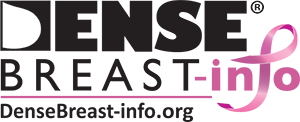Dense Breast Notification Laws
Several recent studies have been published reporting on survey results to determine the “effectiveness” of breast density notification (DBN) laws, comparing levels of awareness and understanding between DBN and non-DBN states. These studies found that although the level of awareness of breast density did increase in women in DBN states, there was no increase in the understanding of the clinical implications of breast density. In addition, several studies have shown no increase in screening ultrasound utilization.
To distinguish between general information about breast density and patient-specific notification of breast density results, DB-i has provided perspective for articles recently published in DotMed, Diagnostic Imaging and AuntMinnie. In addition, there is a Letter in Press to Academic Radiology, and a Letter to the Editor has been submitted to the Journal of General Internal Medicine.
There is much interest in the topic and while you can look forward to a more detailed, published DB-i response, below are some general thoughts on the studies:
1. While inform laws were intended to raise a woman’s awareness about dense breasts, they were not intended to be a substitute for a conversation with her provider.
2. Not all 38 state laws provide the same information or level of notification to patients. The recent studies do not distinguish between DBN laws that actually inform a woman she herself has dense breasts vs. those that only provide general information about breast density. For example, see the chart below for the Tri-State area.
3. To ascertain the impact of personal notification, an analysis of state inform laws that do provide full information (personal notification of density and information on masking, risk and supplemental screening), compared to states with no DBN, is needed. Specifically:
• 6 state laws require only general information about breast density be provided to the patient without informing the patient if she, herself, has dense breasts
• 6 state laws do not provide unambiguous language about the masking effect of cancers due to dense tissue
• 23 states laws do not mention that “supplemental screening” may be a topic to discuss with a health provider
4. Referring physicians remain confused about supplemental screening. Some of this confusion results from lack of a national guideline recommending screening ultrasound in women with dense breasts. Women at high risk should be referred for supplemental screening MRI regardless of breast density, in accordance with national guidelines.
These study results highlight the need for a national reporting standard that assures all U.S. women receive the same minimum threshold of information. DB-i was developed to provide information to guide new discussions occurring as a result of “inform” notifications.
DB-i is pleased to be recognized by the media as a leading authority on dense breasts and dense breast legislation and we will continue to be an active voice on the topic to facilitate a better understanding and reporting of the complexities of this important topic.

